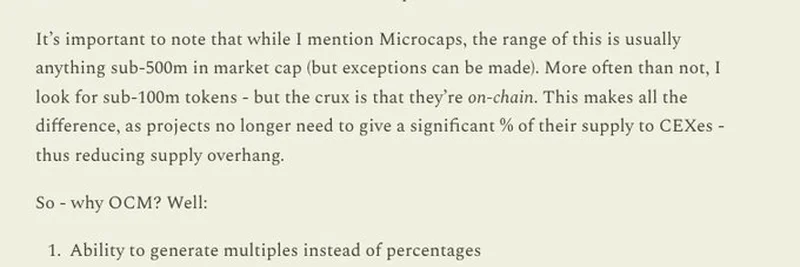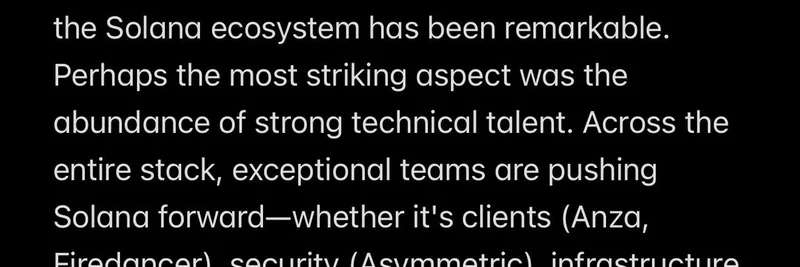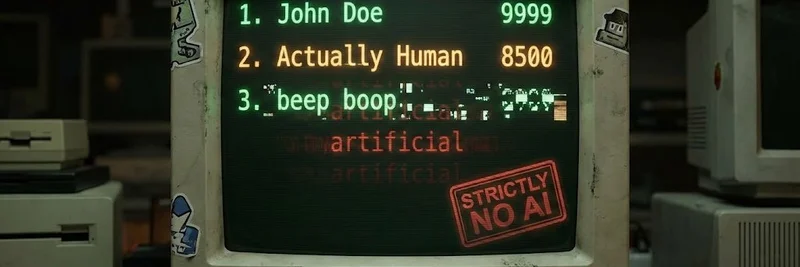Hey there, crypto enthusiasts! If you’ve been keeping an eye on the blockchain space, you might have noticed a buzz around something called on-chain microcaps (OCM). Recently, Kyle from X dropped an intriguing thread (check it out here) that dives into why these tiny market cap coins could be the next big opportunity in the crypto world. As a former editor-in-chief at CoinDesk and now with Meme Insider, I’m excited to break this down for you in a way that’s easy to digest—especially if you’re new to the game!
What Are On-Chain Microcaps?
First things first, let’s clarify what Kyle means by OCM. On-chain microcaps are cryptocurrencies with market caps typically ranging from $50 million to $300 million. Unlike the big players like Bitcoin or Ethereum, these are smaller projects that often fly under the radar. The “on-chain” part refers to the fact that their activity and value are tracked directly on the blockchain, giving investors a clearer picture of what’s happening.
Kyle argues that this sector stands out from a liquid investor’s point of view—meaning people who move money around quickly in the market. Why? Because many of these microcap coins aren’t just sitting there waiting to be noticed. They’re actively reducing their supply overhang (the excess tokens that can flood the market) by sending a significant percentage to centralized exchanges (CEXes) or burning them. This scarcity can drive value up, which is a big deal!
Why OCM Could Be a Game-Changer
So, what makes these on-chain microcaps so exciting? Kyle lays out a couple of key points that caught my attention:
Big Returns, Not Just Small Gains
Forget the days of hoping for a 10% bump. Kyle suggests that OCMs have the potential to deliver multiples—think 3x, 5x, or even more—compared to the percentage gains you might see with larger coins. For example, a $10 million market cap coin could grow into a $30 million or even $50 million cap under the right conditions. Sure, some might scoff and call it a “sh*tcoin,” but Kyle points to a coin with a $300 million market cap, $180 million in liquidity, and a 3.5x return in just 120 days. That’s hard to ignore!A Maturing Market
Kyle also hints that the OCM space is evolving. Gone are the wild days of pure meme coins or projects with no substance (aka “vaporware”). Today, these microcaps are starting to show real potential, backed by community growth and sometimes even practical use cases. It’s a shift from “hype-driven” to “value-driven,” which could attract more serious investors.
The Risks and Rewards
Now, let’s be real—investing in OCMs isn’t a walk in the park. These coins can be volatile, with prices sometimes dropping 50% before bouncing back. Kyle mentions Hyperliquid’s HYPE token as an example of a strong project that still faced this rollercoaster. The key is timing and research. If you can spot a coin with solid fundamentals—like product-market fit, token holder alignment, and no supply overhang—you might just catch the next big wave.
For blockchain practitioners or anyone looking to dive deeper, this is where Meme Insider comes in. We’re building a knowledge base to help you stay updated on the latest trends, including how meme tokens and microcaps intersect. Whether you’re a newbie or a seasoned pro, understanding these dynamics can give you an edge.
Final Thoughts
Kyle’s thread is a wake-up call for anyone watching the crypto market. On-chain microcaps might just be the hidden gems of 2025, offering a chance to get in early on projects with massive upside. Of course, it’s not without risks, so always do your homework and maybe consult a financial advisor. What do you think—ready to explore the OCM space? Drop your thoughts in the comments, and let’s keep the conversation going!
Disclaimer: This is not financial advice. Crypto investments carry risk, and you should consult qualified professionals before diving in.



